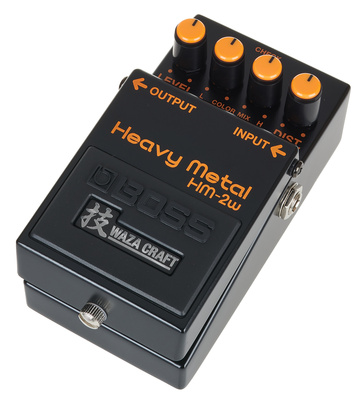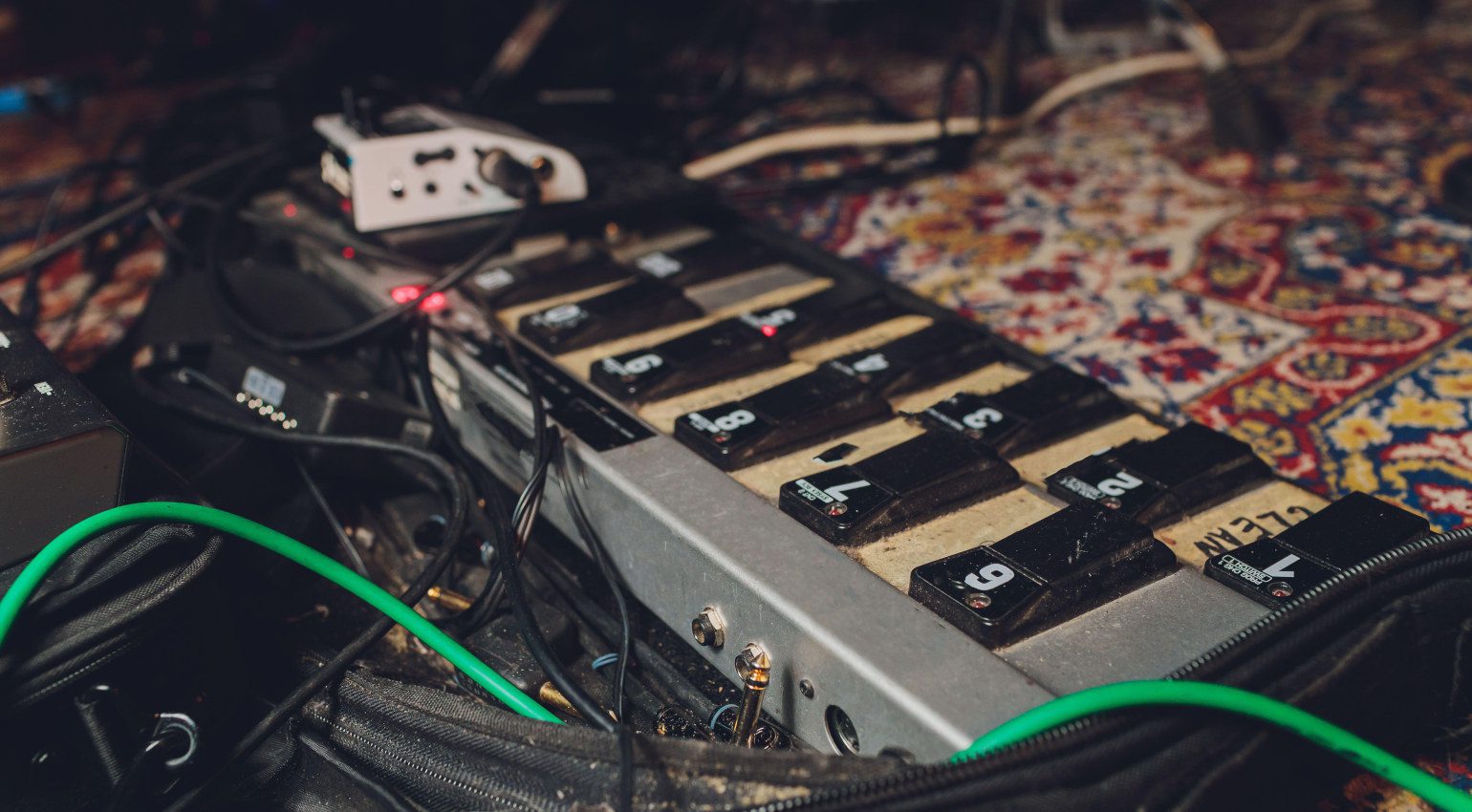Epic Riffs Await: Discover Your Perfect Nu Metal Setup!
How to recreate this nineties guitar sound with modern equipment
When Nu Metal rocked the scene in the late 90s, it was a sonic revolution. The way we play guitar and dial-in sounds today was changed fundamentally by Nu Metal’s innovative guitar players. Let’s take a look at how you can tune your equipment to the sound of Wes Borland, Brian Welch, or Daron Malakian.
History of the Nu Metal sound
Back in the late 90s, when cell phones were largely absent and the internet was still in its infancy, a new (nu?) guitar sound started popping up. The music world had slowly been adapting to the dissonant guitar sounds introduced by the Grunge wave from Seattle in the early 90s. Behind it, crawling in the shadows, came Nu Metal.
The aggression of Metal combined with the rebellious nature of Hip Hop drew from the dark, emotional tone of Grunge.
You are currently viewing a placeholder content from YouTube. To access the actual content, click the button below. Please note that doing so will share data with third-party providers.
The roots of Nu Metal are deeply rooted in the musical experimentation of bands like Korn and Limp Bizkit. The pioneers of the genre paid no heed to musical conventions or boundaries. They created a guitar sound that was so raw and direct that it took many musicians’ hearts by storm.
Drop tunings, palm muting, and aggressive patterns formed the backbone of iconic songs like “Blind” or “Nookie”. And it was all supported by a selection of equipment that catapulted the Nu Metal sound onto the stages of the world.
You are currently viewing a placeholder content from YouTube. To access the actual content, click the button below. Please note that doing so will share data with third-party providers.
Before we look at how to set up the Nu Metal sound for your guitar, let’s look at the equipment you need. We wouldn’t be Gearnews if we skipped this part.
The best equipment for the Nu Metal sound

James Munky Shaffer – Korn guitarrist and Nu Metal pioneer · Source: Pete Jenkins / Alamy Stock Foto
Attitude and skill are not enough to truly capture this genre’s sonic depths and nuances. You also need the right gear.
Guitar, strings, and tuning: The Nu Metal guitarist generally prefers guitars with a powerful, assertive tone. So, axes with humbucker pickups best provide the necessary basis thanks to their assertiveness and simultaneous minimization of hum and noise.
If you just want to dip your toes into the Nu Metal sound, look for guitars with a fixed bridge. These offer better tuning stability at lower (drop) tunings. And if you want to stay longer, you can always adjust the Floyd Rose … The models in the Harley Benton Active series are classics for newcomers – the JA-20HH Active SBK, for example, is a very good choice for metalheads!


Amplifiers and cabinets for Nu Metal

Wes Borland – Avantgard guitar player and Nu Metal Icon · Source: florent boyadjian / Alamy Stock Foto
An amp with a high-gain channel is essential to achieve the amount of distortion required for the Nu Metal sound. Most Nu Metal guitarists prefer tube amps for their warm, rich tone. High-quality solid-state amps can also get you there.


The EVH 5150, for example, is reminiscent of the classic tube amps. In addition, it comes with modern features such as an integrated noise gate.
The best cabinet to combine with your amp should be able to reproduce the low frequencies without loss of clarity. 4×12″ cabinets are a common choice as they offer a powerful output. The Harley Benton G412A Celestion has proven to be a good option – the Thomann house brand delivers the necessary pressure with its integrated Celestion speakers.


The best effect pedals for the Nu Metal sound
Maddening amounts of distortion are at the core of the Nu Metal sound – so you need a good distortion pedal! A fuzz pedal might also work.
It might be a controversial choice for other Rock or Metal genres, but the BOSS Metal Zone definitely has a right to exist – especially for this type of sound. The WAZA edition of the BOSS HM-2w is a reliable Death Metal distortion unit. In addition, it adds plenty of weight to your sound to make it punch through within a full band arrangement.


In addition to distortion effects, wah pedals can also be useful to give your sound a more dynamic component. And a noise gate can be helpful in controlling unwanted noise at high gain settings. My personal choice: The Noise Reaper from Stone Deaf!


Dialing it in – Setting up the Nu Metal sound
You are currently viewing a placeholder content from YouTube. To access the actual content, click the button below. Please note that doing so will share data with third-party providers.
The subtleties that shape the texture and dynamics of the Nu Metal sound lie primarily in the gain structure of the amp’s distortion.
Distortion and gain structure: In Nu Metal, distortion is not just an effect but a fundamental component of its sound. So, using amps with lots of gain reserves is crucial to achieve the necessary saturation and fullness without sounding muddy. It’s also about finding a balance between clarity and aggression.
Although it’s tempting to turn the knob up to eleven, too much gain can also result in a muddy sound. And too little will take away the punchiness. A good starting point might be around 70-80% of the maximum gain value.
Bass (EQ): It is crucial to emphasize the low frequencies in your signal in order to bring out the typical depth and heaviness of the Nu Metal sound. However, with low-tuned guitars, try to keep a respectful distance from the frequencies of the bass player to avoid clashing frequencies.
Mids (EQ): The mids should only be boosted moderately for Nu Metal sound in order to create a balance between warmth and clarity. But if the mids are set too low, the sound can sound hollow (the so-called “mid-scoop” can also be a stylistic device), while dialing mids too high can make the sound seem overloaded.
Treble (EQ): Treble should be adjusted for the desired crispness and clarity of the sound. But be careful. Too much can lead to a shrill, sawing sound that massively influences the dynamics of the overall sound.
Videos on the subject of nu-metal sound
Just want to listen to the sound of the 90s again? Let’s take a listen!
You are currently viewing a placeholder content from YouTube. To access the actual content, click the button below. Please note that doing so will share data with third-party providers.
You are currently viewing a placeholder content from YouTube. To access the actual content, click the button below. Please note that doing so will share data with third-party providers.
You are currently viewing a placeholder content from YouTube. To access the actual content, click the button below. Please note that doing so will share data with third-party providers.
Originally published on Gearnews.de by Jan Rotring. Translation by Julian Schmauch.
* This post contains affiliate links and/or widgets. When you buy a product via our affiliate partner, we receive a small commission that helps support what we do. Don’t worry, you pay the same price. Thanks for your support!
2 responses to “Epic Riffs Await: Discover Your Perfect Nu Metal Setup!”
 2,8 / 5,0 |
2,8 / 5,0 | 










I am sorry but I have to disagree with this article. Active pickups in a 5150 are not Nu Metal, except if we include Machine Head in the genre…
The sound of Nu Metal is first and foremost a Mesa Dual Rectifier and in most cases a PRS with 57 pickups (based on vintage PAF). For Korn and Deftones a 7 strings Ibanez would do.
Anyone who seek these early 2000s Nu Metal tones should essentially go to a les Paul type of guitar with PAF type of pickups. From Harley Benton to LTD, to PRS SE etc there are several models that can be recommended but the PRS SE standard is the baseline for a beginner on budget.
For the amp, for those on budget there are Joyo series affordable amps that does the Rectifier things quite well.
For the Cab (utmost importance) vintage 30s are a must.
For the one seeking a pedal, a Revv G4 is typically having the raw agression and scooped signature of a Recto (million miles ahead of a Metal Zone).
all of the above and at the very least suggest a baritone or a seven string (like the Baritone-7 SBK, if you want to stick with the brand of your parent company.
Drop tuning is THE staple of nu-metal.
Also…HM-2 is probably the worst pedal suggestion. There are tons of dual rectifier pedals at every prices but just a simple DS-1 would but leagues better